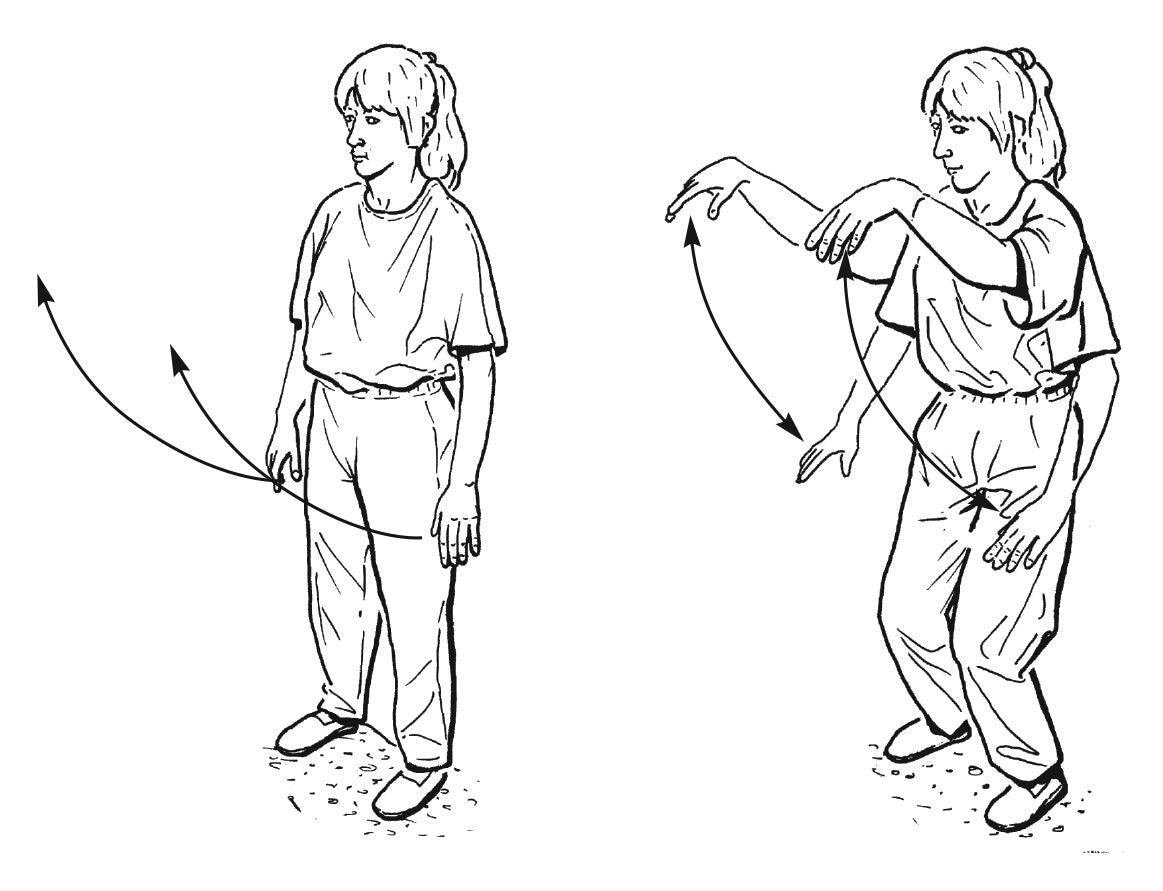Get ready to move with Taiji Qigong
This is an excerpt from The Theory and Practice of Taiji Qigong-4th Edition by Chris Jarmey.
Beginning (...Movement)
Stance and Movements
Stand naturally with your arms relaxed by your side, feet parallel about shoulder-width apart and your knees very slightly bent.
Look directly ahead or very slightly down, with eyelids open, but relaxed. (Allow your eyes to close if facing directly into the rising or setting sun.)
Your back should be straight but relaxed throughout. Your elbows should be unlocked and your relaxed fingers will naturally curl slightly.
As you inhale
- Raise your arms forward with palms down, to slightly higher than shoulder height. Bend your knees slightly as you do this (page 73 under IMPORTANT! within Internal Effects). Ensure your knees do not project beyond your toes.

As you exhale
- Allow your hands to gradually sink down to waist height; slightly straightening your knees as you do so.
Mental Focus
- If you find it difficult to keep your neck relaxed and upright, visualize something light in weight balancing on your head throughout the movement. Before you begin to move, fix your mind on Dantian for 2–3 breaths.
Basic Focus
- Focus your attention on Laogong (Pericardium-8).
- Use natural breathing (page 58).
Intermediate Focus
Option 1
- As you lower your arms, extend Qi from Yongquan (Kidney-1) far into the ground, so you feel you are connecting with Earth Qi at a deep level.
- Then, when you raise your arms, feel that your Qi descends from your Lower Dantian into the ground to meet with and absorb Earth Qi. As such, you should adopt natural breathing, or use normal breathing so that Ren-1 (Huiyin) opens as your arms are raised during inhalation.
Option 2
If you are feeling “full” and “blocked” and want to dissolve or transform this fullness or blockage of Qi:
- As you raise your arms and inhale, imagine clear water (if you feel hot) or warm fine sand (if you feel cold) is being sucked up through Yongquan (Kidney-1) into your legs and filling your entire body, absorbing and transforming the tensions, stress, pain, anger, etc.
- As you lower your arms and exhale, feel the water or sand flood out through the soles of your feet and deep into the earth, to be replaced with fresh water or sand during your next inhalation.
- Use natural or normal breathing, although you can also use reverse breathing if proficient.
Option 3
If you are feeling “empty” and listless and want to absorb fresh Qi:
- Imagine you are enveloped within a ball of pure white light or fluid-like nectar which you absorb as you do the movements.
Advanced Focus
- Use the single breath reverse breathing cycle (page 62), or natural breathing (page 58).
- Occasionally, it is useful to use the heel raising option to facilitate this focus, i.e., raise your heels as you inhale and gently sink your heels back down as you exhale.
Internal Effects
If your focus is on the single breath reverse breathing cycle, Earth Qi will enter through your feet and sometimes through Ren-1 (Huiyin) into the Small Circulation. Heaven Qi might also enter the Small Circulation via Du-20 (Baihui). In addition, Qi will flow from Ren-17 (Shanzhong) along your Pericardium channel, charging your palms (Laogong) with Qi.
This effect in other exercises will be abridged to read: “Heaven Qi and Earth Qi may naturally supplement your Small Circulation. Any emotional and physical tensions will transform into free flowing Qi” (see A Note About Internal Effects, page 73).
Benefits
As with all these exercises, this one has all the benefits listed under A Note about Benefits, page 76, plus:
Calms the mind, because …
- Absorbing the cool Yin quality of Earth Qi during the rising movement and dissolving or transforming mental and physical tensions during the descending movement will sedate the Liver Qi if it is overactive. Overactive Liver Qi has an agitated quality and can rise up to the head, causing you to lose your composure. Blocked Liver Qi can create anger and frustration, which is the antithesis of calmness.
SHOP

Get the latest insights with regular newsletters, plus periodic product information and special insider offers.
JOIN NOW


